Forever Changed dives into the heart of the Second World War. Discover the personal stories of Canadians for whom nothing would ever be the same.
- An Immersive Exhibition Rich in Compelling Stories
- Anchor Stories
- Exhibition Highlights
- Video Gallery
- Don’t Forget to Pick Up a Souvenir Catalogue
- Additional Resources
- Book Your Tickets Online
An Immersive Exhibition Rich in Compelling Stories
For Canada, the Second World War was a global conflict. For individual Canadians, it was personal. Developed to mark the 75th anniversary of the end of the Second World War, Forever Changed weaves together a diverse range of stories with 175 compelling artifacts, exploring the personal experience of war across Canada and around the world.
From a parachutist penning one last letter before being dropped into danger, to a “bomb girl” who was burned on the job; from a prisoner of war who turned to art to cope with the misery, to a Japanese Canadian teenager forced to move 600 kilometres from home; this new exhibition brings to life the impact of the Second World War on the lives of Canadians.
Forever Changed: an exhibition developed by the Canadian War Museum.
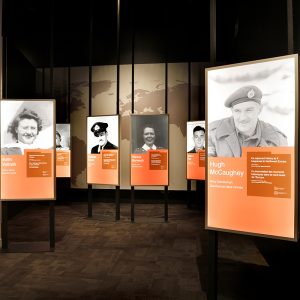 Forever ChangedForever Changed dives into the heart of the Second World War. Discover the personal stories of Canadians for whom nothing would ever be the same.
Forever ChangedForever Changed dives into the heart of the Second World War. Discover the personal stories of Canadians for whom nothing would ever be the same.
Photo: Canadian War Museum, CWM2020-0051-0001-Dm.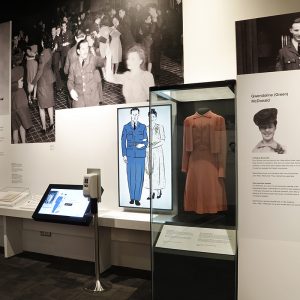 Married in StyleDesign a dress for Gwendoline Green’s wartime wedding.
Married in StyleDesign a dress for Gwendoline Green’s wartime wedding.
Photo: Canadian War Museum, CWM2020-0051-00014-Dm.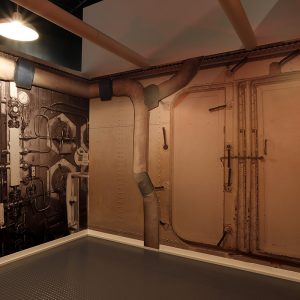 22 August 1944, 5:16 p.m.Experience the attack on HMS Nabob.
22 August 1944, 5:16 p.m.Experience the attack on HMS Nabob.
Photo: Canadian War Museum, CWM2020-0051-0005-Dm.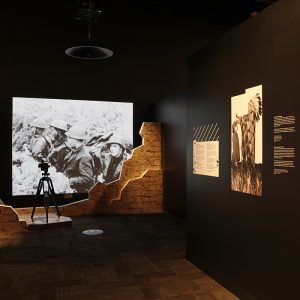 Shooting the WarWatch a selection of footage recorded by combat cameramen.
Shooting the WarWatch a selection of footage recorded by combat cameramen.
Photo: Canadian War Museum, CWM2020-0051-0008-Dm.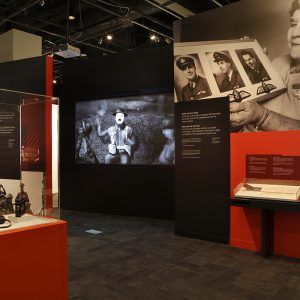 Alex Campbell’s Final BattleWatch an original production depicting combat at Ortona, Italy, on 25 December 1943.
Alex Campbell’s Final BattleWatch an original production depicting combat at Ortona, Italy, on 25 December 1943.
Photo: Canadian War Museum, CWM2020-0051-00015-Dm.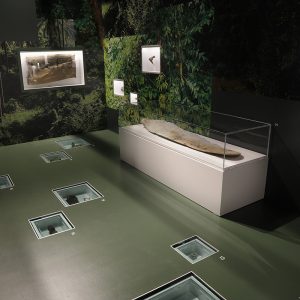 Aircraft RecoveryThese pieces of the Dakota C-47 that crashed on 21 June 1945 were recovered in 1996.
Aircraft RecoveryThese pieces of the Dakota C-47 that crashed on 21 June 1945 were recovered in 1996.
Photo: Canadian War Museum, CWM2020-0051-00017-Dm.
Anchor Stories
Each zone in Forever Changed contains one or more central stories to anchor the exhibition, along with accounts from dozens of additional Canadian service personnel and civilians, whose artifacts and eyewitness testimonies offer unique insight into the many experiences of war.
“The stories are sometimes poignant, sometimes tragic, sometimes hopeful. All of them are compelling.”
Caroline Dromaguet, Director General, Canadian War Museum
The People
Hugh McCaughey
Edith Vollrath
Alex Campbell
Will Kyle
George Boyer
Exhibition Highlights
Zone 1: Supporting and Defending
On the home front, Canadians supported the Allied war effort. In the North Atlantic, they protected supply lines to Britain, while merchant seamen transported crucial war material across the sea. The stories of “bomb girl” Edith Vollrath, George Boyer and others explore Canadian involvement in the defence of Canada and Britain, along with the country’s wartime industrial production.




Zone 2: The War Against Germany
Canadians fought a war of liberation against Germany, contributing significantly to the final victory against fascism. The stories of Alex Campbell, Hugh McCaughey, Winnie Burwash, and other Canadians featured in this zone attest to the struggles and sacrifices of the war.




Zone 3: The War Against Japan
As Japanese forces overran many British colonies in Asia, Canadian civilians and military personnel were captured and held under brutal conditions. Family back in Canada often knew nothing of the fate of a loved one for months or even years. This uncertainty and sacrifice can be seen in the stories of Will Kyle, Bill Chong, and others featured in this zone.




Zone 4: A Country Shaped by War
Following the Allied victory in 1945, more than one million veterans joined their fellow Canadians, alongside new arrivals, to build a stronger country. Seventy-five years later, the Second World War continues to affect Canadians. The stories of Michiko Ishii, Hubert Brooks and Regina (Rosenbaum) Gertner offer glimpses into the lasting impact of the war.



Video Gallery
Forever Changed – Stories From the Second World War
Virtual Opening
Cooking for Victory virtual workshop
Zero Waste Living Virtual Workshop
Don’t Forget to Pick Up a Souvenir Catalogue
Complete your visit by picking up the souvenir catalogue Forever Changed – Stories From the Second World War, on sale online and at the Museum Gift Shop.
Additional Resources
Book Your Tickets Online
We are open Monday through Sunday, 9 a.m. to 5 p.m., and until 7 p.m. on Thursday.
To manage the number of visitors inside the Museum, we have introduced timed online ticketing every 15 minutes, with access limited to 75 people at a time. Please book your timed admission ticket online.
Admission Fees (tax not included)
- Adult – $18
- Senior – $16
- Student – $14
- Child (2-12) – $12
- Family (6 pers. – max 2 adults) – $46
- Members – Free
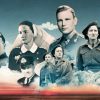
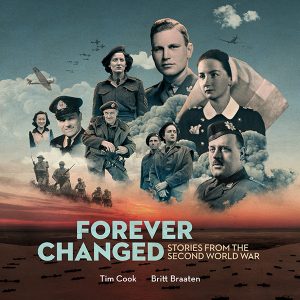
 Exhibition
Exhibition
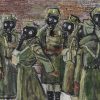 Online Exhibition
Online Exhibition
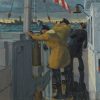 Online Exhibition
Online Exhibition
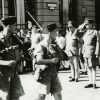 Online Exhibition
Online Exhibition
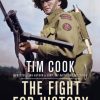 Book
Book
 Book
Book
 Resource
Resource